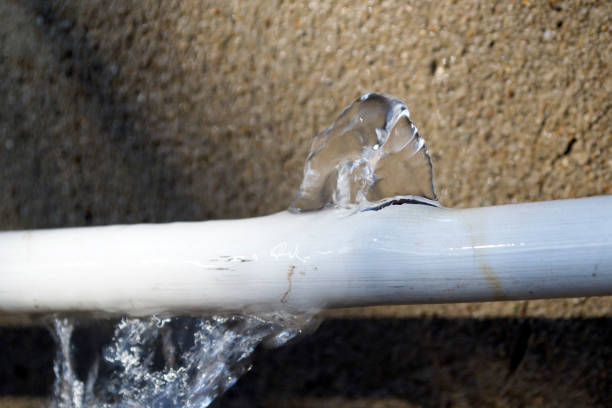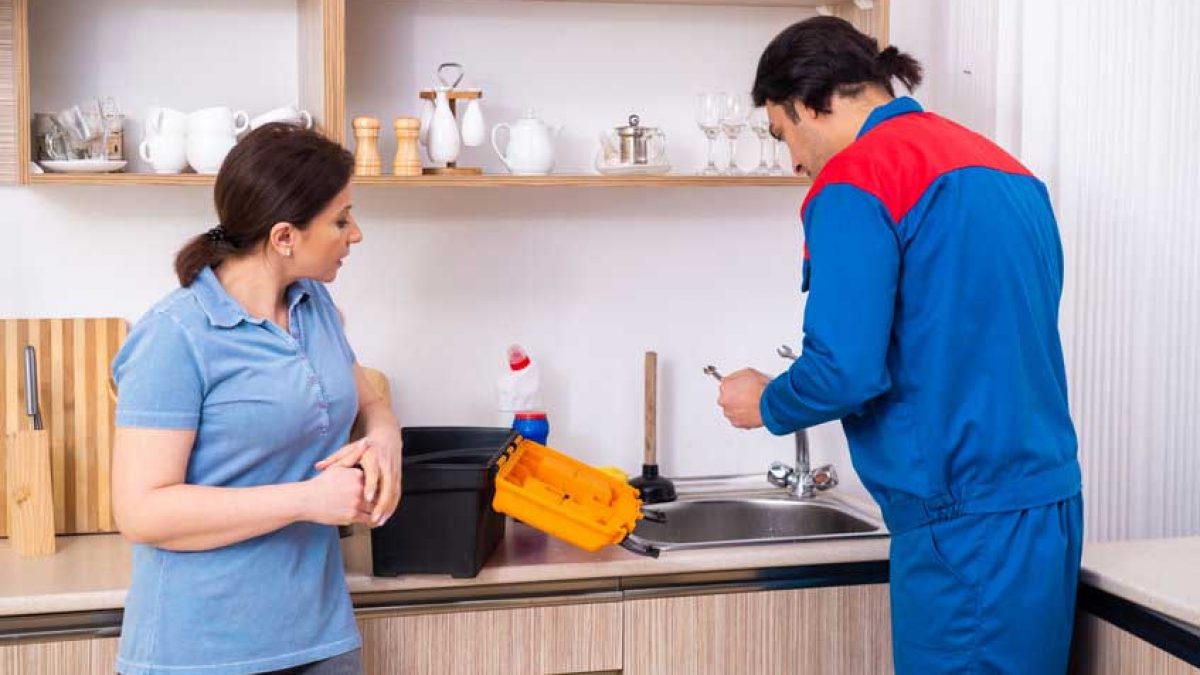This post following next in relation to Common Plumbing Problems in Older Homes is immensely fascinating. You should give it a look.

Older homes commonly include charm, personality, and background, yet they can additionally bring a host of pipes concerns. Whether you're managing aging pipelines, low tide pressure, or leaks, recognizing just how to attend to these typical troubles is vital to keeping a safe and practical home. In this guide, we'll explore the common plumbing difficulties encountered by older homes and offer practical remedies to keep your plumbing in leading shape.
Understanding Usual Pipes Issues
Aging Pipelines
Among one of the most typical issues in older homes is maturing pipes. Relying on the age in which your home was built, the pipelines might be made from products that have actually worn away with time, such as galvanized steel, cast iron, or perhaps lead. These products can corrode, end up being weak, or develop leaks, bring about water damage and possible carcinogen.
Low Tide Pressure
If you're experiencing low water pressure, maybe because of natural resources, deterioration inside the pipes, or old fixtures that are no more working efficiently. This can be a significant trouble, especially in locations like showers and sinks.
Leaking Pipes
Leaks are an additional constant problem in older homes, often triggered by corroded or worn-out pipelines. Also tiny leakages can lead to considerable water damages, mold and mildew growth, and boosted water costs if not dealt with without delay.
Obsolete Components
Outdated pipes components such as faucets, commodes, and showerheads not only look old however may also be less efficient, susceptible to leaks, or incompatible with modern-day pipes standards.
Pipeline Rust
Corrosion is a typical problem in older pipes, specifically those made from galvanized steel or actors iron. Corroded pipelines can limit water flow, trigger staining, and eventually bring about leaks or pipeline ruptureds.
Examining the Condition of Your Pipes
Checking Noticeable Pipes
Beginning by checking any type of noticeable pipelines in your house, such as those in cellars, crawl spaces, or under sinks. Search for indications of rust, leakages, or corrosion, which can suggest underlying concerns.
Looking for Leaks
Look for leakages by evaluating areas around faucets, bathrooms, and under sinks. You can also check your water meter prior to and after a period of no water use to discover concealed leaks.
Water Quality Testing
Older pipelines can affect the quality of your water. Conduct a water high quality examination to look for contaminants such as lead, rust, or various other contaminations that might be presented by maturing pipelines.
Solutions for Typical Pipes Issues
Changing Aging Pipes
If your home has old, wearing away pipes, take into consideration replacing them with contemporary products like copper or PEX. This can be a substantial investment, but it will certainly prevent future problems and boost the safety and security and integrity of your plumbing system.
Repairing Low Tide Stress
To repair low tide stress, start by cleaning or changing old fixtures and eliminating mineral accumulation in the pipelines. If the problem continues, it may be needed to change areas of corroded pipes.
Repairing and Changing Leaking Pipes
For tiny leaks, you can utilize pipe clamps or epoxy putty as a short-term solution. Nonetheless, it's ideal to replace leaking pipes completely to stay clear of more damage.
Upgrading Fixtures
Updating old components to contemporary, water-efficient versions can improve your home's pipes performance and minimize water intake. Look for fixtures with the WaterSense label for the very best performance.
Dealing with Pipeline Rust
If your pipelines are corroded, replacing them with corrosion-resistant products like copper, PVC, or PEX is the very best solution. Regular inspections and water high quality maintenance can aid prevent further deterioration.
When to Call a Specialist
While some plumbing issues can be taken care of with do it yourself options, there are times when it's ideal to call a professional. If you're handling significant leakages, considerable corrosion, or are uncertain about the problem of your pipes, a certified plumbing technician can give skilled assessment and repair work.
Preventive Upkeep Tips
Normal Assessments
Routinely examine your pipes system for signs of damage. Capturing problems early can avoid pricey fixings down the line.
Water Pressure Policy
Ensure your water stress is within the advised range to avoid emphasizing your pipelines and components. A plumbing professional can install a stress regulator if needed.
Water High Quality Upkeep
Mount water filters or conditioners if your water quality is poor. This can secure your pipelines and components from damages caused by tough water or contaminants.
Aggressive Pipe Replacement
If your home has very old pipelines, take into consideration proactive substitute prior to significant problems emerge. This can conserve you from emergency situation repairs and water damages.
Conclusion
Managing pipes problems in older homes calls for a combination of vigilance, preventative upkeep, and prompt upgrades. By recognizing the common challenges and knowing when to look for expert help, you can guarantee your pipes system continues to be practical and trusted for several years to find.
7 Common Plumbing Issues in Older Homes
Read More Plumbing Articles
Whether you're mulling over purchasing your dream period property, or you already own one, being aware of common plumbing problems in old homes can help you avoid expensive mishaps.
Many plumbing problems in old homes are similar to those faced in newer properties, but some are more prevalent in houses over a certain age. If you've recently bought an old house or haven't had your aging plumbing system inspected in a while, it's worth keeping an eye out for the following issues:
Bad Pipe Materials
Depending on the age of your home, the pipe materials used in your plumbing system may not comply with modern building codes and could be unsafe.
Lead pipes are the most dangerous type of old plumbing pipes. This metal was once used extensively for manufacturing water pipes because it's easy to shape and has a long lifespan. Plumbers also used it to solder joints between pipes made from other materials. However, lead can cause serious health problems, particularly in children. Drinking water from pipes containing lead can lead to lead poisoning symptoms, such as stomach pain and fatigue, so it's essential to replace them if you discover them in your home.
Outdated Fixtures
Even if the previous owners installed high-quality fixtures, these won't be immune to the effects of age and wear and tear. Over time, fixtures can corrode and wear down, increasing the likelihood of leaks and clogs.
Sometimes, an outdated fixture can be a minor irritation that makes using your plumbing system less convenient. However, it's best to maintain older plumbing components carefully and replace them when they show signs of failure to avoid a major leak and water damage.
Corroded or Leaking Pipes
Corroded pipes are a common plumbing issue in old homes. Corrosive substances in the water supply can gradually break down the metal used to make the pipes, eventually causing leaks. Corrosion can also cause sediment to build up, increasing the chances of a clogged pipe. All these issues take time to develop, making them more likely in old house plumbing.
Drain Problems
Older home drainage systems were often installed before the arrival of appliances such as garbage disposals, so they're frequently incapable of handling modern household usage. The result could be frequent clogs or water backing up into sinks and other fixtures.
A failing sewer line is the most serious drainage issue commonly encountered in old houses. This problem is more likely if you've remodeled your home to add more fixtures, placing more pressure on a sewer line not designed for the purpose. Eventually, the line can become clogged, causing unpleasant indoor smells, poor drainage and contaminated wastewater backing up into your fixtures.
Pipe Bellies
Pipe bellies develop when pipes buried in your home's foundation start sagging as the building settles. They create downward slopes, affecting water drainage and increasing the risk of significant blockages. You don't need to worry about pipe bellies in a pressurized main line, as the water pressure prevents the pipes from clogging, but they can cause issues in drain lines.
Root Intrusion
Root intrusion occurs when trees and other shrubs grow roots too close to your sewer line or water service line. Sometimes, the roots penetrate the pipe walls, leading to leaks and soft or wet areas in your yard.
Unfortunately, root intrusion is a more common plumbing problem in old homes. That's because older houses are more likely to have pipe bellies allowing standing water to accumulate, attracting roots to the moist conditions.
https://www.elocal.com/resources/home-improvement/plumbing/faq/plumbing-issues-in-older-homes/

Do you appreciate more info about Plumbing Issues in Older Properties and How to Fix Them? Try to leave a remark down below. We'd be delighted to know your opinion about this blog. We hope to see you back again later on. Are you aware of somebody else who is in to the subject? Take a moment to promote it. I truly appreciate your readership.
Call Today
Comments on “Your Guide to Plumbing Issues in Older Homes”